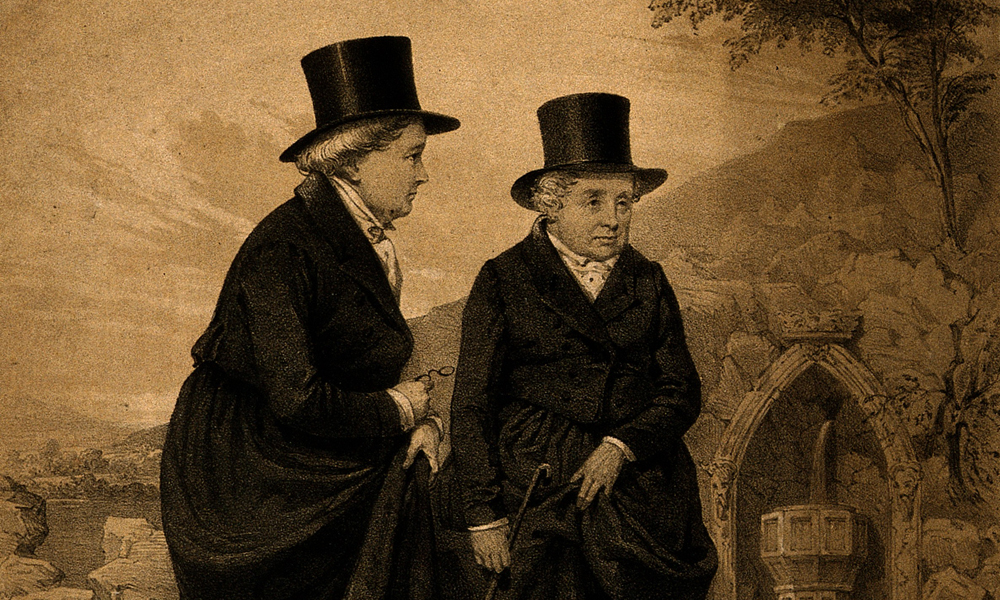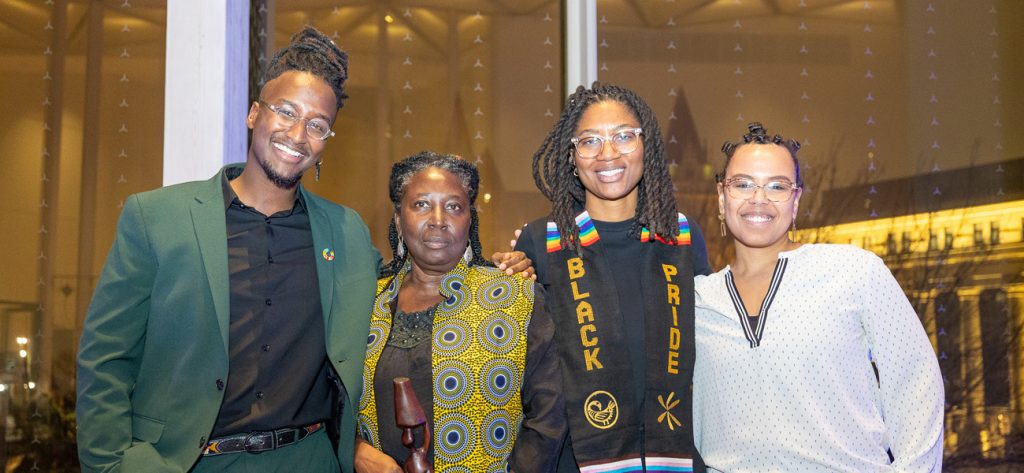Though relatively forgotten in today’s day and age, there is a long history of women cohabitating in long-term partnerships…
By Sienna Vittoria Asselin
“My love and I took hands and swore, Against the world to be, Poets and lovers evermore.” So says a Victorian-era poem that—contrary to what one might expect from the era—is not about the love between a man and a woman. In fact, this poem was written in the 1890s by English poets Katherine Bradley and Edith Cooper.
Surprised? You’re not alone.
Bradley and Cooper published eight books of poetry and 27 plays under the joint pseudonym of “Michael Field,” and lived together as “romantic friends” for nearly 40 years. “Let no man think he can put asunder what God has joined,” Bradley wrote of her relationship in a letter, echoing the words of the Christian marriage ceremony.
And even more surprising is that nobody batted an eye at this arrangement.
Though relatively forgotten in today’s day and age, there is a long history of women cohabitating in long-term partnerships. Long before same-sex marriage was legalized, independent women chose to cohabitate in what were sometimes referred to as “Boston marriages.”
Now, were these lesbian relationships as we would understand them today, or asexual female friendships? And where did the term “Boston marriage” originate, and how exactly did this arrangement work? Read on as we answer these questions and look back at the history and meaning of the term “Boston marriage.”
What is a Boston marriage?
The Merriam Webster dictionary defines Boston marriage as a “long-term loving relationship between two women,” and cites its first known use as from 1893. More specifically, according to the Encyclopedia of Gender and Society, a Boston marriage was a term used in New England in the late 19th century to refer to a long-standing and intimate monogamous relationship between two women who typically were not heterosexually affianced or wed at the time of their relationship, though they may have been so before or after the relationship.”
Scholars are divided on whether we should think of these women as lesbians. Some say they were. But others are less willing to apply the modern term anachronistically. And ultimately, it depended on the women. As some autobiographies and memoirs of the time reveal, these partnerships did include a romantic or sexual aspect. But others were platonic, and as we shall see, mutually beneficial in many ways.
Where did the term originate?
While women certainly cohabitated beforehand (there are examples from the 18th century and before), the specific term “Boston marriage” came about in the 19th century.
The term likely comes from a novel by Henry James called The Bostonians (1886). This novel features two modern, independent, feminist-leaning women who cohabitated, and is said to have been inspired by his sister, Alice James, a writer and thinker in her own right, who had a life partner named Katherine Loring.
As the century progressed, the term faded into history, but was revived by a play called Boston Marriage (2000) by David Mamet.
Why did women form Boston marriages?
A “Boston marriage” had many advantages. At their best, “same-sex ‘marriages’ offered a communion of kindred spirits such as romantic friends…equals in terms of finances, responsibilities, decision-making—all areas in which the husband claimed precedence and advantage in heterosexual marriage,” writes American historian Lillian Faderman. Furthermore, as we will get into more later, they “potentially fostered rather than interfered with the heady and exciting new ambitions of the early generations of professional women.”
Plus, some women preferred female relationships because of an intense resentment against the male assumption of superiority over women. Some women were simply tired of being considered the property of men. And in Victorian society, in which male and female spheres were strictly divided (often to the exclusion of women), they were often left to themselves. They joined forces in charity endeavors and reform movements, spending lots of time with one another, and therefore finding a sense of companionship.
Part of the reason that “Boston marriages” were socially acceptable is because of Victorian stereotypes of women’s lack of passion and sexual desire. While male homosexuality was very taboo, the sexual aspect of relationships among women went under the radar. Historian Stephanie Coontz tells NPR that “it was considered perfectly normal for heterosexual women to have crushes on each other, to be very affectionate, and so forth.” She goes on to explain that “a pair of women who actually had a sexual relationship could easily manage to be together without arousing suspicion that it was anything other than feminine affection.” Ironically, once the sexual revolution of the early 20th century put the spotlight on sexuality and it was more openly discussed, “then same-sex relationships and signs of affection began to be regarded with suspicion.”
So while they may have gone undetected, according to an essay in Intimate Matters: A History of Sexuality in America, “in many, many cases they were every bit as passionate, loving, and committed as our modern notions lead us to assume a heterosexual marriage would be… Women lived together, owned property jointly, planned their travels together, shared holidays and family celebrations with one another, and slept in the same bed.”
Who formed Boston marriages?
According to Faderman, many of the women in Boston marriages were early career women who were looking for companionship and support outside of traditional marriage. She writes in Odd Girls and Twilight Lovers: A History of Lesbian Life in Twentieth-Century America that “society generally agreed that marriage and career were incompatible for a woman.” Women were expected to stop working upon marriage, and so if you wanted companionship or to share the responsibilities of running a household, living with another woman could be the perfect solution.
Faderman writes in her other book, To Believe in Women: What Lesbians Have Done for America, that many of those women in Boston marriages shared the “excitement of pioneering. They went where no women had gone before—not only into colleges and universities, but also into the polls, the operating rooms, the pulpits, the legislatures, the law courts. It was often their same-sex partnerships and commitments that made those exciting explorations possible.”
There are many examples throughout the years of these marriages, from independently wealthy aristocrats to professional working women.
For example, Lady Eleonor Butler and Sarah Ponsonby, two 18th-century aristocrats, were so inseparable that they were nicknamed the Ladies of Llangollen. Likewise, the early 20th-century American novelist Willa Cather lived with her long-time partner Edith Lewis for nearly 40 years and are buried together in a New Hampshire cemetery. Suffragist and pacifist Jane Addams had two long-term female partners over the course of her life. And Dr Sarah Josephine Baker, health commissioner for the city of New York in the early 20th century, lived in two successive Boston marriages.
Boston marriages were especially common in academia. For example, out of the 53 female faculty members at Wellesley College in Massachusetts in the late 19th century, only one was married to a man. This was so common that the term “Wellesley marriage” became interchangeable with “Boston marriage.” (And inspired by their professor mentors, romantic friendships were also common among the female students at women’s colleges at the turn of the century, but that’s a whole other—equally interesting—story for another day.)
Most studies of the phenomenon have focussed on white, middle or upper-class women, often college graduates. “Certainly Black women of the same period had far less access to education and to publishing venues, and so were unlikely to become widely known as couples,” writes Michelle Gibson in Lesbian Academic Couples. However, “it is beginning to become apparent, however, that some Black women did establish and maintain long-term romantic friendships of this type.” For examples, she cites a recent study that looked at the letters between domestic servant Addie Brown, and teacher of freed slaves Rebecca Primus in the post-Civil War years.
We can only hope that more information will come to light about these relationships, and that these pioneers of same-sex marriage are given their due. It is clear that romantic relationships between women have always existed, and it is indeed an interesting study to look at how the societal context of the times influenced how they were perceived, why women chose this type of relationship over heterosexual marriage, and how these systems of support may have shaped and accelerated various professional fields.






POST A COMMENT